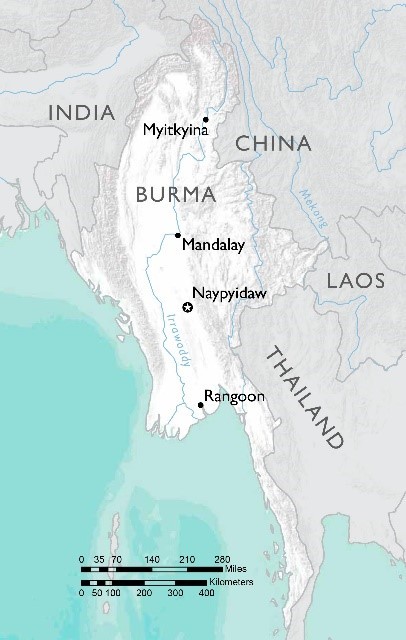- What We Do
- Agriculture and Food Security
- Democracy, Human Rights and Governance
- Economic Growth and Trade
- Education
- Ending Extreme Poverty
- Environment and Global Climate Change
- Gender Equality and Women's Empowerment
- Global Health
- Water and Sanitation
- Working in Crises and Conflict
- U.S. Global Development Lab

August 9, 2017
Food Security Situation
-
Burma, a country in transition, has an estimated population of approximately 53 million comprising 135 different ethnic groups. Regional production disparities caused by local policies, high food prices, pest outbreaks, floods, limited agricultural and financial inputs, armed conflict and communal violence pose threats to nationwide food security.
-
Access to adequate and nutritionally-balanced food in Burma remains a major challenge for the most vulnerable populations. Thirty-eight percent of the population lives below the poverty line. Only an estimated 16 percent of children under 2 receive a minimum acceptable diet, and nearly one-third of children under 5 are stunted.
-
Approximately 219,000 displaced people, of whom 80 percent are women and children, remain in camps or camp-like situations in Kachin, Shan and Rakhine states because of armed conflict.
-
Since October 2016, violence between armed members of Burma's Rohingya minority group and the Burmese military has caused severe food insecurity in northeastern Rakhine State. As of April 2017, at least 173,000 people require immediate emergency food assistance and nutrition support in the region, including as many as 80,500 children under 5 in need of treatment for severe acute malnutrition (SAM) until April 2018, according to the UN World Food Program (WFP).
Food Assistance Programs
-
In Fiscal Year (FY) 2017, USAID’s Office of Food for Peace (FFP) has contributed $5 million to WFP to reach displaced people with locally and regionally purchased food as well as cash transfers where accessible markets and functioning cash infrastructure exist in the targeted area of operation. WFP provides life-saving assistance to 515,000 people displaced or affected by conflicts, violence and natural disasters in Burma.
-
In Rakhine State, FFP support to the UN Children's Fund (UNICEF) provides Ready-to-Use Therapeutic Foods (RUTF) to an estimated 8,250 children suffering from SAM in nine townships. Focusing on displaced and crisis-affected populations, UNICEF and its partners also provide active and passive SAM screening for children, community-based SAM treatment for children and capacity building for local government health authorities via monitoring, planning, and training support.
Food for Peace Contributions
Total Contributions:
| U.S. Dollars | Metric Tons | |
|---|---|---|
| Fiscal Year 2017 | $5.1 million | 4,982 MT |
| Fiscal Year 2016 | $8.4 million | 5,342 MT |
| Fiscal Year 2015 | $13.0 million | 13,968 MT |







Comment
Make a general inquiry or suggest an improvement.